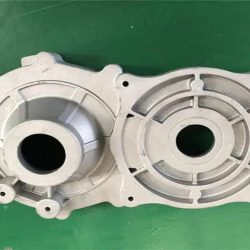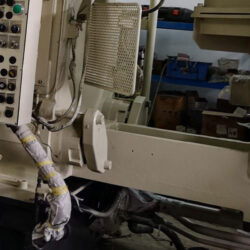Compared with copper and aluminum alloys, zinc alloys have the advantages of low melting point, good casting performance and high economic benefits. They are widely used in industries such as automobiles, household appliances, and daily hardware. Zinc alloy die-casting parts can be divided into structural die-casting parts and functional die-casting parts according to application requirements,https://cnctraining.cn/ or parts without special requirements. Because zinc alloy is active and corrosive, it can only be used after being covered by a protective layer.
During the electroplating process, a substitution reaction layer is easily formed on the surface of the zinc alloy, resulting in poor adhesion of the electroplating interface, poor compactness of the surface of the workpiece, and also containing electroplating solution. These potential problems will appear in the form of coating foaming after a period of time, which will cause serious quality problems. It is of great significance to understand the reasons for the blistering of zinc alloy die-casting parts after electroplating and to formulate measures to eliminate blisters.
1. Causes of blistering defects
1. The impact of raw materials and refining
Zinc-aluminum alloy die castings usually use zinc-aluminum alloy die castings with an aluminum content of 3%-4%. According to the standard of die-cast zinc alloy, the chemical composition to be tested includes zinc, aluminum, magnesium, copper, lead, iron, cadmium, tin, etc. Among them, the impurity content of lead and cadmium will affect the quality of the alloy. Zinc alloy die-cast parts.
The analysis of the blistering problem of zinc alloy die-casting shows that when the content of lead and cadmium is low (lead <0.002%, cadmium <0.002%), the blistering problem is less, and the content of lead and cadmium is high (lead <0.015%, cadmium <0.01 %), the foaming problem has increased significantly. The main reason is that lead, cadmium, tin and other impurities in the zinc alloy die-cast sheet accumulate in the grain boundaries, causing intergranular corrosion.
In the process of zinc alloy die casting, waste materials such as condensate are generated in the continuous casting runner. The zinc alloy liquid used for die-casting is melted by mixing new materials and recycled materials. In the literature, the influence of the proportion of recycled materials and the refining process on the properties of die-cast zinc alloys has been studied.
In the zinc alloy smelting process, the addition of recycled materials will significantly affect the structure and properties of the zinc alloy, and the addition of recycled materials and ammonium chloride refining will affect the structure and properties of the zinc alloy.
The impurity content in zinc alloy raw materials, the mixing ratio of smelting recycled materials and refining have a great influence on the quality of die-casting products. This influence will spread in turn, and eventually affect the quality of zinc alloy parts after electroplating. Therefore, the production of zinc alloy die-casting must not only strictly control the quality of raw materials, but also must monitor the quality of the zinc alloy liquid before die-casting.https://glovepuppetry.com/
2. The influence of die-casting mold
die casting is a key step in the production of zinc alloy parts. The design of die-casting mold and the setting of die-casting parameters have a significant impact on the quality of die-casting. Among them, the gate and the runner are the channels that lead the zinc alloy liquid to the cavity. The cavity is the cavity where the die-cast part is formed and the die-cast part directly contacts. The design of gates and runners as well as the distribution of cavities are used for die casting. Quality is very important.
Reasonable mold design must ensure complete filling, and must also ensure that the gas phenomenon is minimized during the filling process. The influence of the shape design of the inner runner on the microstructure of zinc alloy die-casting parts.https://berylliumcopper.cn/
Trapezoidal runners produce more holes than elliptical gates. In terms of die casting quality, the design of elliptical runners is better than trapezoidal runners. The porous structure of die-cast zinc alloy parts is very detrimental to its mechanical properties and coating quality.
The bubbles, cold barriers and cracks produced in the zinc alloy die casting process will bring difficulties to the subsequent cleaning and electroplating, and ensure the quality of the die castings to provide high-quality electroplating substrate materials.




